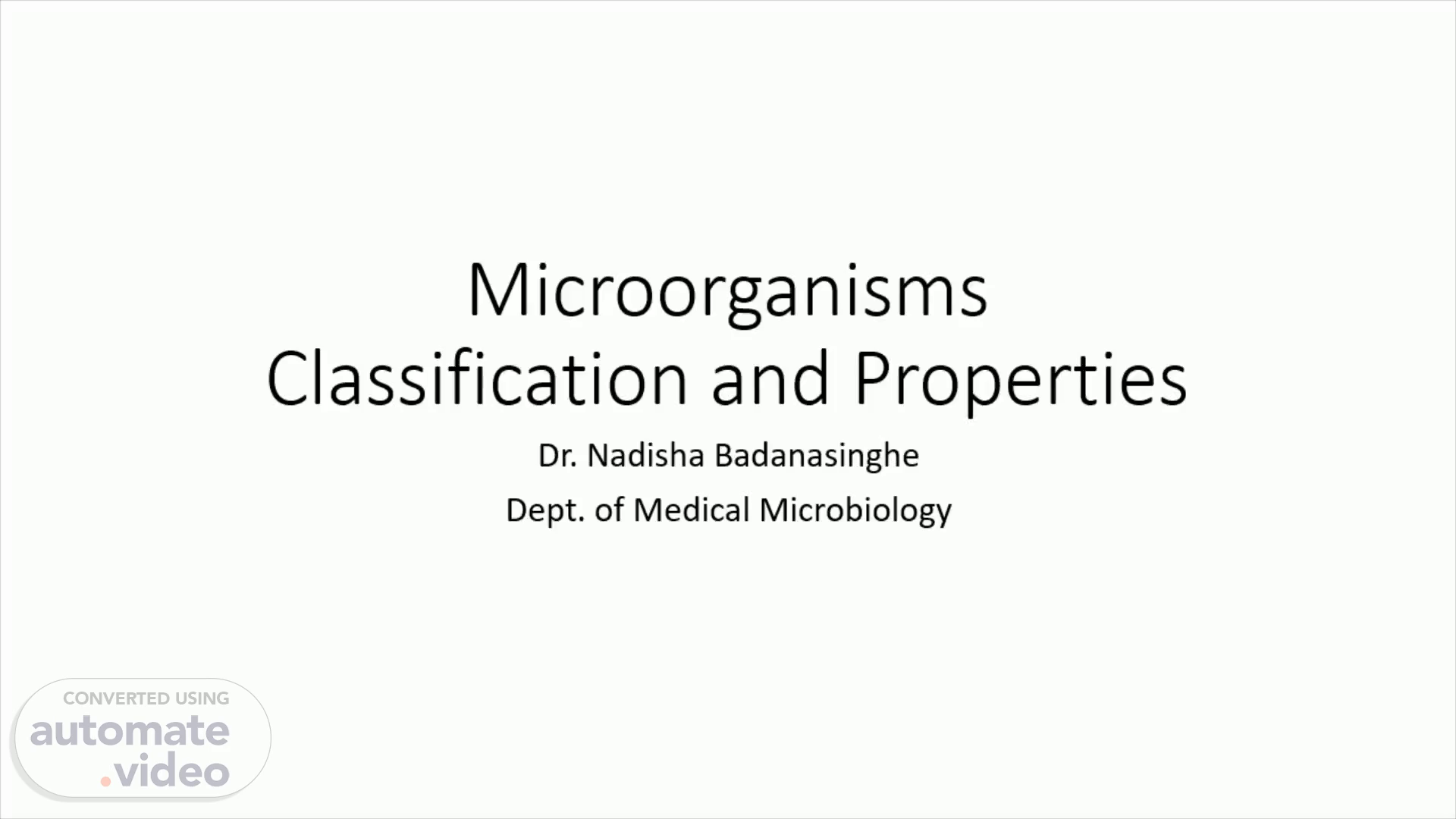
Microorganisms Classification and Properties
Scene 1 (0s)
Microorganisms Classification and Properties. Dr. Nadisha Badanasinghe Dept. of Medical Microbiology.
Scene 2 (5s)
Objectives. Classification of microbes Bacteria Fungi viruses Methods of classification Nomenclature Identification Characteristics – Bacteria, fungi and virus.
Scene 3 (37s)
Too small to be seen with the naked eye colonize every environment on earth More abundant than any other life form You have more bacterial cells than human cells Most living organisms have not yet been discovered or classified Pathogenic microbes are the most important cause of human disease and death.
Scene 4 (1m 28s)
Typical eukaryotic cell 1000 nm (1 gm) Virus Prokaryotic cell Nucleus.
Scene 5 (1m 58s)
Classification.
Scene 6 (2m 3s)
Why important?. To find how groups of organisms are alike and how they are different When new species are discovered, whether the organism is sufficiently different from known species to establish a new group, or whether it should be placed into an existing group. The science of classification is called taxonomy.
Scene 7 (2m 47s)
Taxonomy. Consists of Classification Orderly grouping of microbes Nomenclature Scientific naming of microbes Identification Correct naming of microbes according to agreed systems of classification Microbiologists are concerned about this.
Scene 8 (3m 18s)
8. Taxonomy / Systematics. Nomenclature Providing a formal name Genus & species Suzuki swift Nissan sunny Toyota Camry Honda Civic.
Scene 9 (4m 48s)
SYSTEMS OF CLASSIFICATION.
Scene 10 (4m 53s)
Classification of living things. 1969-Whittaker’s Five-Kingdom system Kingdom Prokaryotae / Monera all prokaryocytes - all bacteria Kingdom Protista unicellular eukaryocytes protozoa, unicellular algae, slime molds Kingdom Fungi unicellular yeasts multicellular (but still microscopic) molds macroscopic mushrooms Kingdom Plantae plants. All multicellular and all carry on photosynthesis. Kingdom Animalia animals.
Scene 11 (6m 8s)
11. 139427_Five_Kingdoms. Five Kingdoms. Bacteria Archaea.
Scene 12 (6m 15s)
3 Domains. Studies of ribosomes – revealed 3 different types of cells Eukaryotes -everything except bacteria this includes; Protista Fungi Plants Animals 2. Bacteria-these are the common, everyday bacteria Archaea ( archaeobacteria )-unusual bacteria Differences in RNA Differences in structure of membrane lipids Differences in cell wall structure Unusual metabolic processes Ability to thrive in extreme physical conditions.
Scene 13 (7m 31s)
13. 0306. 3 Domains. Carl Woese Late 1970’s & early 1980’s.